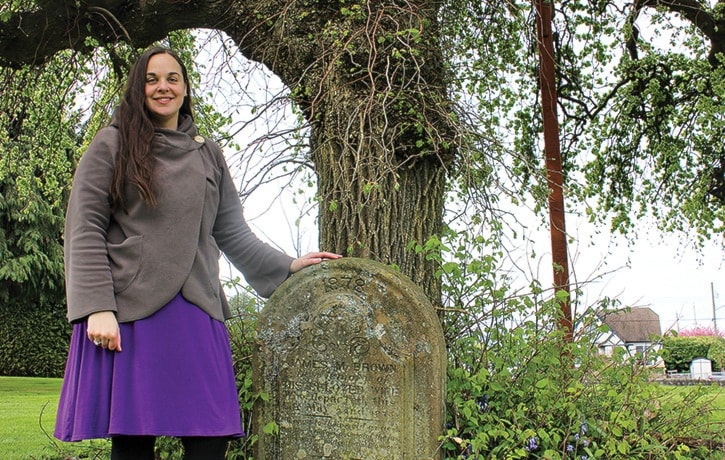Perched atop a hill not far from downtown lies Nanaimo Municipal Cemetery.
It’s a calm, quiet place with meticulously manicured grass and a beautiful view of the Nanaimo Harbour.
The public cemetery, located on Howard and Bowen roads, is also the final resting place of hundreds of Nanaimo’s pioneers including Leah Brown, nee Westwood, whose tombstone gets particular attention because of the unique tree that it sits under.
“Her story gets a lot of interest because a lot of people recognize the tree,” said Aimee Greenaway, Nanaimo Museum interpretation curator. “It’s pretty recognizable and the marker is really interesting.”
Born in England in 1843, Leah moved to Nanaimo and married James Brown, who also came to the city from England. The couple, who married in Nanaimo in December of 1863, had six sons and three daughters and lived on a farm in the city known as Ashlar Farm. In May of 1875, Leah died while giving birth to a son who would die five weeks later. She was buried at Pioneer Cemetery that same year. However, a year later, her husband elected to move her to the public cemetery after it was announced that the Pioneer Cemetery was full.
“Her husband was concerned that the Pioneer Cemetery would fall into disrepair,” Greenaway said.
Brown is just one of hundreds of individuals who are buried at the cemetery, including an estimated 600 people who died due to coal mining related accidents.
“People from all walks of life are in here,” Greenaway said. “You find coal miners in here and there are merchants.”
First established in 1877, the Nanaimo Public Cemetery was created after the Pioneer Cemetery became full. The land was donated by the Vancouver Coal Mining and Land Company, who at the time owned large swaths of land in Nanaimo.
Among the others buried in the cemetery include Mark Bate, the first mayor of Nanaimo, Louis Stark, one of the first black settlers on Salt Spring Island, and William Sloan, one of the first individuals to find gold during the Klondike gold rush.
“He owned a merchant store in Nanaimo in the 1890s and … he and his party were up in the Klondike before the gold rush had been declared, so he of course got rich,” Greenaway said.
Another interesting individual buried at the cemetery is Adam Horne, an employee of the Hudson’s Bay Company who came to Nanaimo in the early 1850s.
“He did a lot of really neat things,” Greenaway said. “I recall him being well known for walking across the Island and Horne Lake is named after him.”
Today, no more plots can be purchased at the cemetery.
The Nanaimo Museum holds tours there throughout the summer.
reporter2@nanaimobulletin.com
